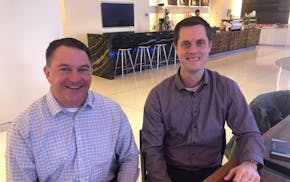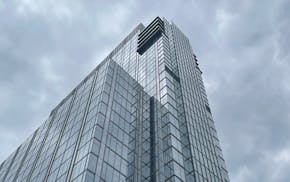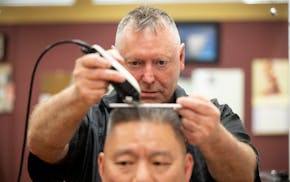The Twin Cities played host to a global rock star inventor in late October and few noticed.
Maybe because Shuji Nakamura is a Nobel Prize-winning electrical engineer instead of a guitar player or quarterback.
Still, about 500 building owners, contractors, lighting designers and architects from several states gathered at the Aria event center in Minneapolis to listen to a scientist who has illuminated the world with new technology that uses far less energy, cutting pollution and helping grow greener economies.
Nakamura, a self-effacing, soft-spoken Japanese-born electrical engineer, created a better light bulb that has sparked a decade-old industrial revolution that's still in its infancy. He has made the world brighter and cleaner.
Nakamura, 64, labored in obscurity for a Japanese electronics company, moving to the University of California, Santa Barbara, to commence doctoral research in the 1990s.
It led to the invention of blue light-emitting diodes, or LED lighting. They produce more light and up to 90 percent energy savings.
Nakamura won the 2014 Nobel Prize in physics for his work.
The commercialization of his work meant brighter, long-lasting lighting and hundreds of power plants that won't be built, billions in cost and untold pollution avoided.
Jon Kirkhoff, co-owner of JTH Lighting Alliance, a Twin Cities-based, five-state independent manufacturer's representative, played host to what probably was the Twin Cities biggest lighting conference late last month.
It also marked the firm's 30th anniversary and Nakamura was feted for the LED revolution.
"LED turned the page for us and the industry," Kirkhoff said. "Ninety five percent of our work is LED. The technology has just taken off.
"It's more expensive up front, but you save 80 percent [of the electricity]," Kirkhoff said. "The price has gone down about 20 percent a year. You get more light for lower wattage. And they last six times longer than fluorescent lighting."
Gross revenue of JTH, which employs 43, has risen from about $30 million to $70 million over the last five years.
The incandescent bulb, which throws off up to 90 percent of its energy in heat, has gone the way of horse and buggy. LED is so environmentally and cost significant because up to 40 percent of building energy is used to light the world.
Engineers, health care and lighting professionals increasingly are able to optimize lighting in intensity and coloring to positively impact the attention and health of students, workers and patients throughout the day, through control systems that can vary lighting ingredients and intensity.
Nakamura expressed humility and a bit of regret the other day.
"Those years to develop blue-LED lighting …" he said. "No Saturdays. No Sundays with my family. I was concentrating on … my thesis, my work."
Nakamura told his biographer in "Brilliant" in 2015: "What I have managed to achieve, shows that anybody with relatively little experience in a field with no big money and no collaborations with universities or other companies, can achieve considerable research success alone when he tries a new research area without being obsessed by conventional ideas and wisdom."
Nakamura used a compound called gallium nitride as a semiconductor material in his LED lighting breakthrough.
"When Shuji announced his breakthrough back in 1993, all the researchers working on gallium nitrate could have fit into a minibus," wrote Bob Johnstone, the author of "Brilliant."
Today there are hundreds, if not thousands, at companies and research institutions.
And the compound is being used to produce more efficient wireless networks, mobile computing, hybrid vehicles and other semiconductor-powered instruments."
JTH has worked with dozens of lighting manufacturers on systems for myriad businesses, from the Mall of America to Mayo Clinic.
"We can put lights in a surgical room or waiting room that will kill bacteria with white light," Kirkhoff said. "You can drop the amount of infections in the hospital. It's all part of the LED revolution.
"We analyze buildings, help write specifications and once the order is placed we go out into the market and help install the lighting. It's gone from dumb holes in the ceiling to basically computers on the ceiling. You tie the lighting to automated control systems. It's a technical sale, more than ever."
Today, Nakamura leads California-based SORAA, which develops, deploys and licenses new variations of LED technology.
This rock star didn't ask for a fee to speak several times at the Minneapolis conference. JTH only had to cover his travel and lodging expenses.
Neal St. Anthony has been a Star Tribune business columnist and reporter since 1984. He can be contacted at nstanthony@startribune.com.

St. Anthony: 'Patient' investing paying off for St. Paul's Hill Capital

Jennifer Smith, leader of Burnsville's Innovative Office Solutions, has died

St. Anthony: Medical professions in Minnesota need more people of color in their ranks


